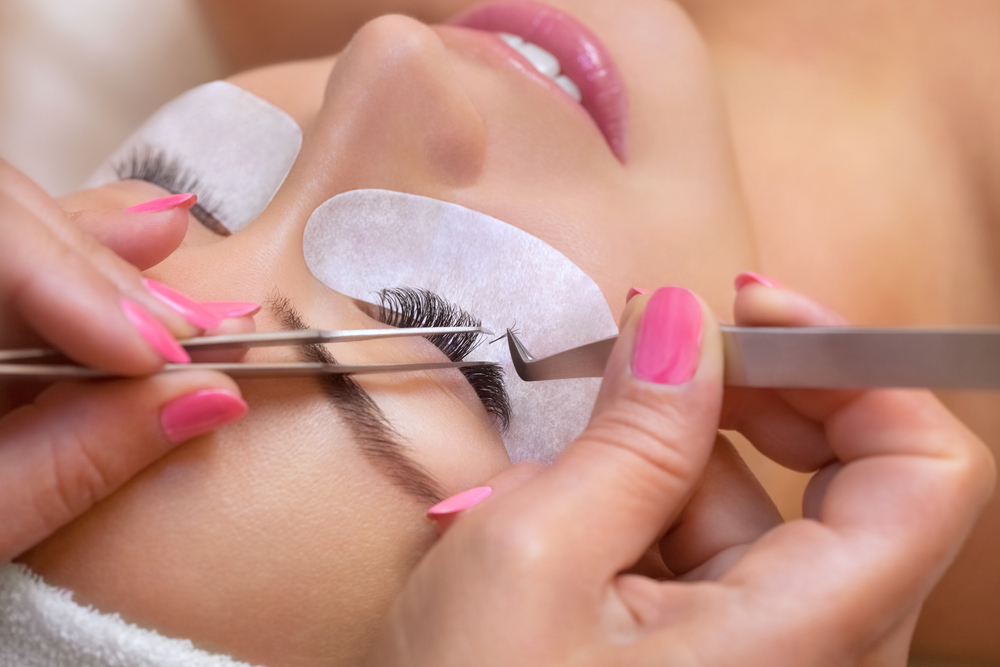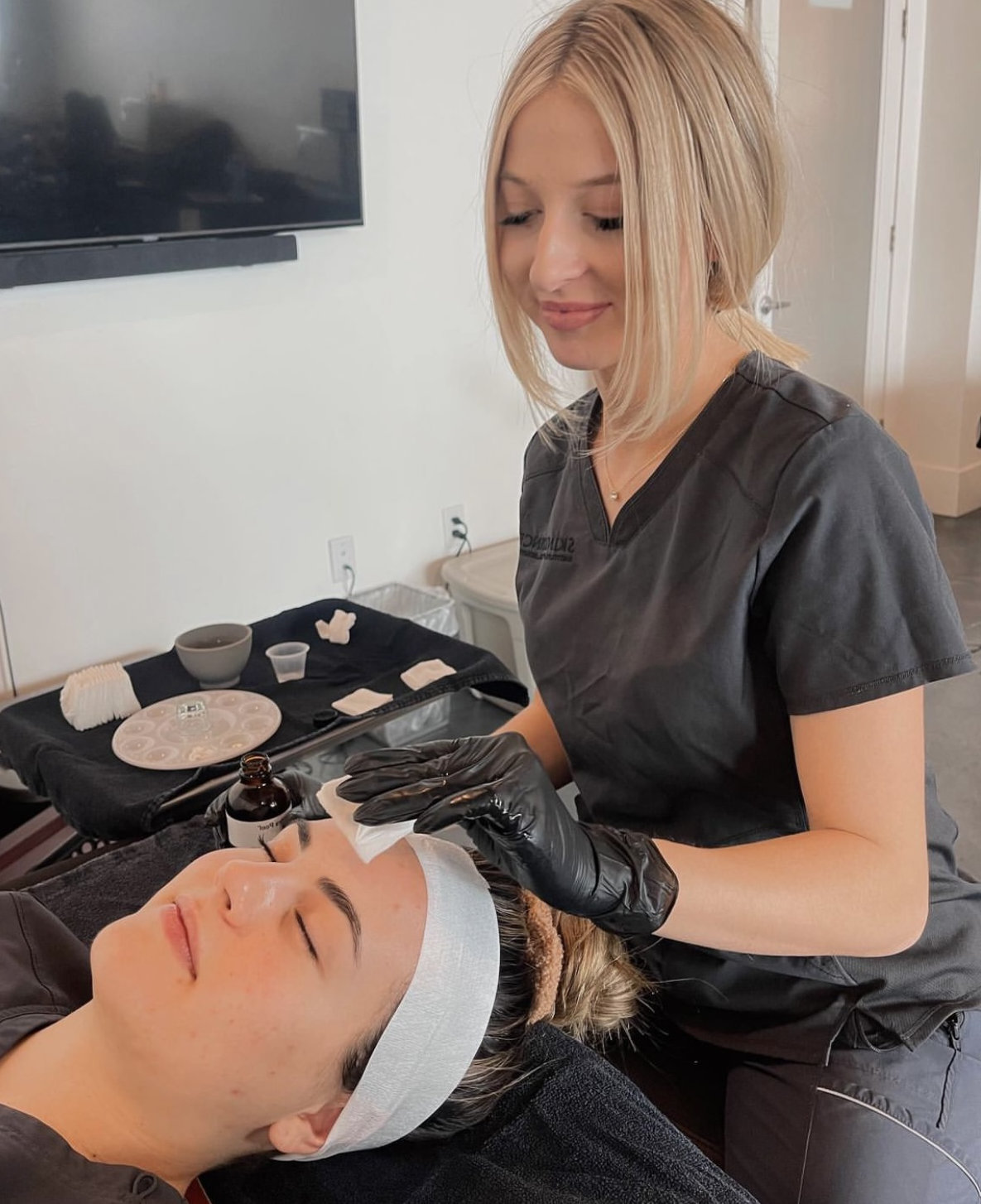Once you get your esthetician license, you will be able to provide a wide variety of valuable services at Utah spas, medical facilities and other locations. One of the most in-demand services today is eyelash extensions. Eyelash extensions make sense for a lot of reasons, and more women are opting to get them. As a prospective student at esthetician school, you may wonder about the process of learning this important skill. At Skin Science Institute, we teach you what you need to know in our eyelash extensions classes.
What Are Eyelash Extensions?
Unlike hair extensions, which are often either taped to the scalp or sewn to existing hair, eyelash extensions are glued into place.
You may be familiar with false eyelashes that you can buy in drugstores. These usually come with a tube of glue that you use to attach the strip of lashes to your eyelid. The process of gluing in eyelash extensions is different, however.
First, the glue is stronger, because eyelash extensions are meant to last for many weeks, while false eyelashes are usually removed after several hours. Additionally, with eyelash extensions, the lashes are attached individually, versus in a strip, like false eyelashes.
What Are Eyelash Extensions Made Of?
Most eyelash extensions are made of a synthetic material, but some are made of silk or mink hair. Silk and mink lashes are slightly more natural looking because they are usually not as shiny as synthetic lashes. However, many women who get eyelash extensions appreciate the shiny quality, which can look more like lashes with makeup on them.
Mink lashes are more expensive (like mink coats) and they do not come curled, so estheticians must perm the lashes themselves. If you use mink lashes, you may want to consult with your client ahead of time to see they object to using animal products.
Silk lashes are often thicker and darker, so they are more appropriate for special occasions such as a wedding, graduation, prom or the holidays.
Eyelash Curl Styles
As an esthetician, it will be important for you to keep many different eyelash styles in stock so that you can cater to your different clients’ wishes. Eyelash extensions come in different lengths, widths and curls. The curls are differentiated by letter: J, B, C, CC, D, L and L+. The letters loosely correspond to the shape of the lash.
When you talk to the client about their expectations for eyelash extensions, this will help you choose which curl style will be best for them. For most clients, you will want to use a combination of curl styles at different points along the eyelid. For instance, you may want to use longer, thicker or curlier lashes at the center or outer corner of the lid.
Additionally, the shape of the client’s eyes and the type of natural lashes they have will impact the result, so you must take these into consideration as well. We cover all these subtopics in our eyelash extensions classes.
The Specifics of Eyelash Extensions
Some clients will be interested in a more dramatic look, while others want their eyelash extensions to appear more natural. However, something you will learn in eyelash extensions classes at Skin Science Institute is that it’s important to consider the client’s natural eyelashes before helping them choose the look they want.
When you are gluing the individual eyelash extensions to the clients existing lashes, you want the extension to be not more than 3 millimeters longer than their natural lashes. If the eyelash extensions are too thick or too long, they will feel heavy, and you may damage their natural lashes.
This is one reason it is important for people who want eyelash extensions to get them only from a licensed esthetician. While anyone can order eyelash extensions online and apply them to their own eyelashes or on others, they have not had the benefit of learning what we teach in eyelash extensions class.
You may read online that some people wonder if eyelash extensions are bad for you or if they can harm your natural lashes. The answer is that they can, if the procedure is not done properly. Eyelash extensions that are too heavy can tax the client’s natural lashes, causing them to break off or fall out. Besides this being upsetting for the client, they also will likely be unhappy that the extensions they paid for did not last very long.
When you become a licensed esthetician, do not let clients talk you into giving them more dramatic eyelash extensions than their natural eyelashes can handle. If they are able to talk someone else into it or get their eyelash extensions from an unlicensed practitioner, they will quickly see their mistake.
Eyelash Extension Safety
One of the most important things you learn in esthetician school is safety. Safety is often closely related to sterilizing your instruments, because bacteria is one of the worst threats to client safety.
In eyelash extension classes, you will learn how to sterilize your tools in an autoclave, so it is safe to use them on the next client. If the tools are not sterilized, you could spread bacteria, viruses and infection from client to client.
Additionally, you will learn safety protocol for working so close to clients’ eyes with glue and sharp tools such as tweezers. Those who patronize unlicensed practitioners to get their eyelash extensions leave themselves open to infection and accidents that could impact their vision or even blind them.
Esthetician School in Utah
Do you want to get your esthetician license and learn how to apply eyelash extensions? Apply today at Skin Science Institute. We have two locations for our esthetician school — one in Sandy and one in Orem — serving students from Provo, West Valley City, West Jordan and Salt Lake City.




